TRAK is the first platform that revolutionizes online physiotherapy by digitizing a therapeutic exercise treatment.
The basis of the protocolization of home exercise is to have a good library of exercises, which are adaptable to each situation and patient and that are adapted to the peculiarities of each injury. This is vital to increase adherence to treatment and to personalize care for each patient.
Although at the beginning we only had 250 exercises, our platform has gone a step further and now has a complete library of more than 550 exercises to do at home that the patient can adapt with materials that anyone would have at home, such as an umbrella or a chair.
In addition, not only do we have a large number of exercises chosen by our team of physiotherapists, but our library is full of variety. It includes mobility, strength, proprioception and stretching exercises, classified by difficulty. With an easy level for early stages of the pathology or more fragile patients, a medium level for more agile patients who progress adequately in their recovery process and an advanced level made for the last stages of the pathology that seeks a correct final readaptation of the patient to their daily life activities.
The tool is a perfect complement to the physiotherapy treatment, allowing the health professional to generate and save his exercise protocols, bringing efficiency and speed to his work. In addition to a search engine to find specific exercises, the physiotherapist can classify the exercises by joint if he/she wants to start a protocol from scratch. In this way, you will find shoulder, cervical, hand and wrist, lumbo-pelvic, hip, knee and ankle and foot exercises.
In case the healthcare professional does not find an exercise that is vital for the pathology he/she is treating, he/she can record the exercise himself/herself and upload it to the platform in order to prescribe it to his/her patients.
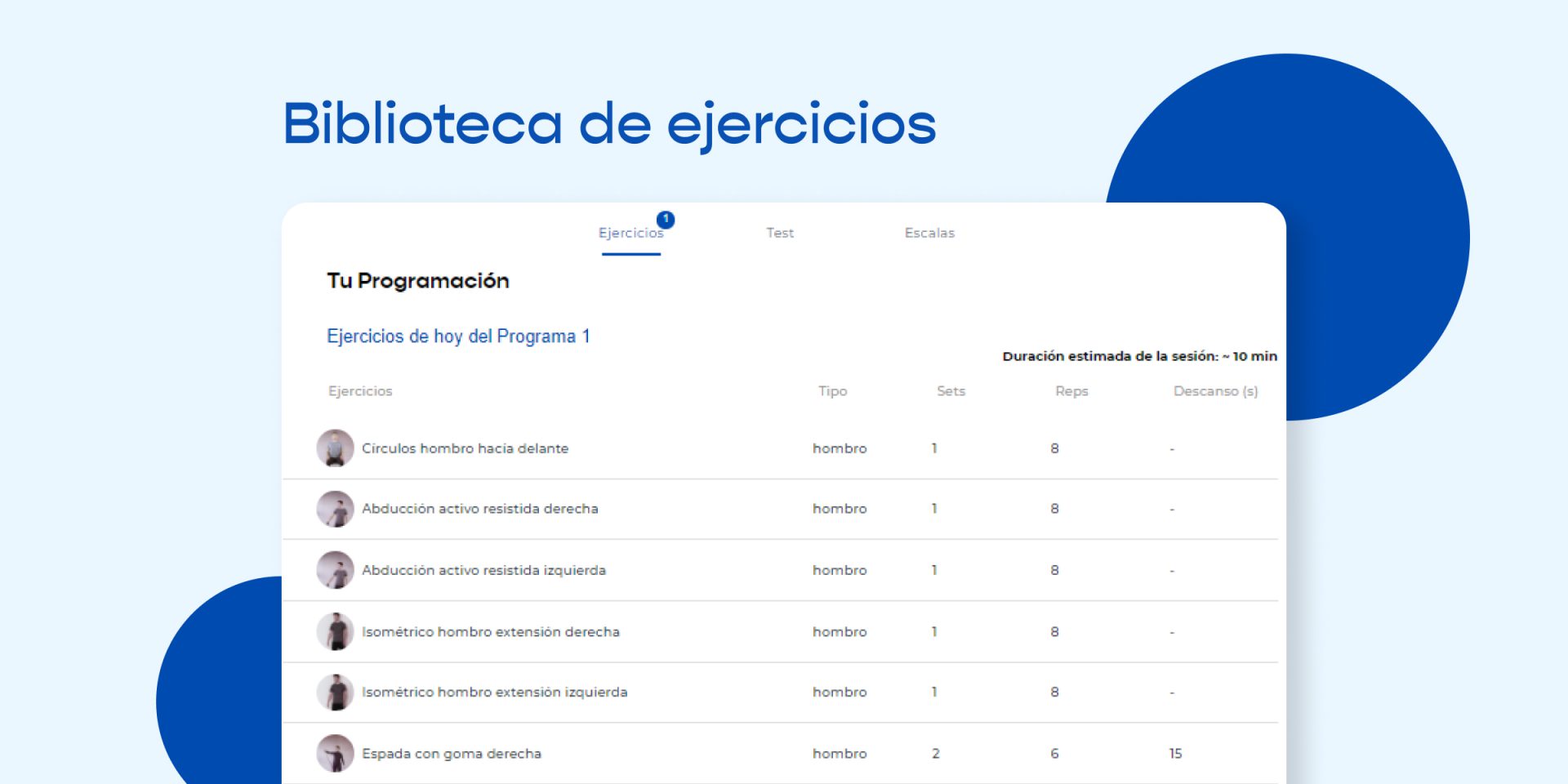
Example: gluteal exercise protocol
Here are some simple examples of gluteal exercises that you could find to make a therapeutic exercise protocol that focuses on this musculature:
1. STRENGTH EXERCISE: HIPTHRUST
As an example of strength exercise we propose the hipthrust. You only need a platform with which to raise the torso off the ground, as in this case is the step.
The patient stands supine on the platform and lets the buttocks fall towards the floor. He then raises the hip in a hip extension motion and holds the position for a few seconds before returning to the starting position.
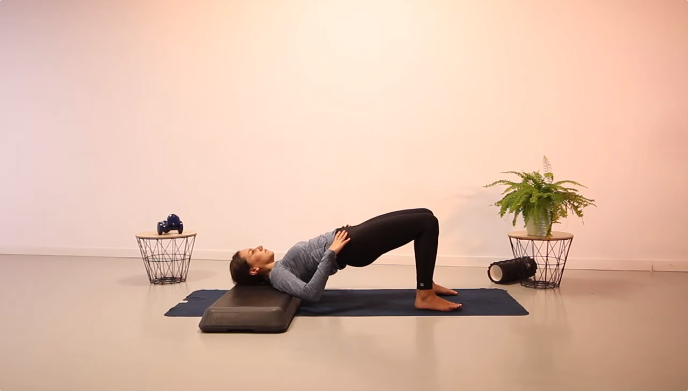
2. MOBILITY EXERCISE: ALTERNATING HIP ABDUCTION IN STANDING POSITION
Although this is a fairly basic exercise, it is a good way to work the gluteus medius, both in the take-off and stance phases.
The patient stands in a standing position and raises one hip into abduction. Then return to the starting position and repeat the movement with the opposite hip.
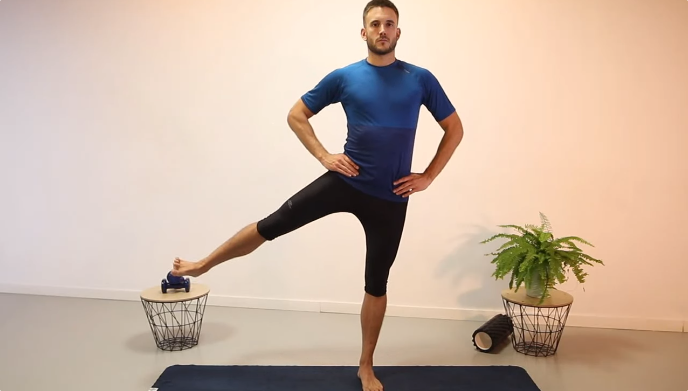
3. PROPRIOCEPTION EXERCISE: HIP ABDUCTION WITH RUBBER BAND AND MONOPODAL SUPPORT
This is a proprioception exercise, although it can also be used to gain strength. The rubber band acts as a resistance and a handicap in maintaining stability.
In the same position as before, the patient places a closed rubber band between his feet so that it exerts a resistance when he tries to perform abduction. After holding the position for a few seconds, the patient returns to the initial position.
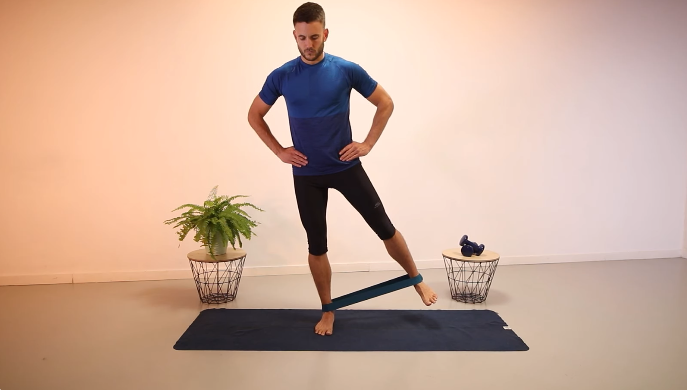
4. STRETCHING EXERCISE: GLUTEAL CHAIR STRETCH
Finally, we propose this exercise that does not require more material than a chair.
The patient places the leg to be stretched on top of the contralateral leg and presses the knee towards the floor, bringing the hip into external rotation.
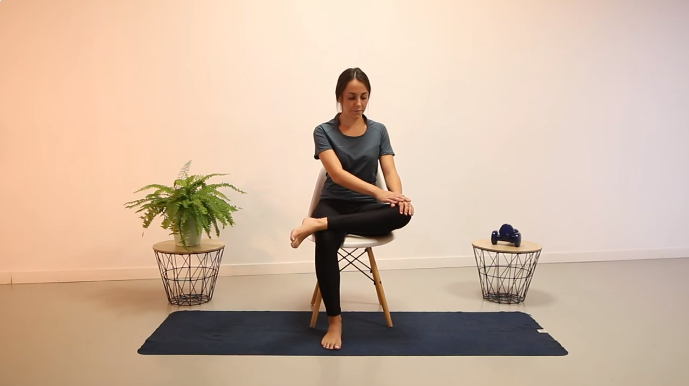
Increases adherence to treatment with TRAK
The use of technological applications and resources to increase exercise adherence has been demonstrated by evidence on multiple occasions.. Valenzuela et al. published a review in 2020 in which they endorsed the use of this type of tool to increase adherence in older patients. On the other hand, a meta-analysis published by Bullard et al. en 2019 stated that adherence to exercise increases significantly if it is supervised.
TRAK combines the potential of implementing technology in physical therapy with the ability to supervise and monitor treatment by the healthcare professional, which has a positive impact on the patient’s attitude.
TRAK’s ability to offer a hybrid treatment of online and face-to-face physiotherapy to patients represents a revolution in clinical practice that is reflected in the evolution of the pathology and the progression of patients, something that we have observed in every use case of our users.
Our maxim is to continue advancing and growing together with the patient and the healthcare professional who prescribes the tool, guaranteeing that healthcare reaches anyone who needs rehabilitation treatment and ensuring that it is optimal and of high quality.